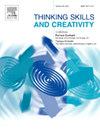Impact of a systematically designed computer-supported argument visualization tutorial on the skill of argument analysis
IF 3.7
2区 教育学
Q1 Social Sciences
引用次数: 0
Abstract
Several studies have shown that computer-supported argument visualization (CSAV) tools improve students' argument analysis skills. However, instructional principles for designing CSAV tools to improve students’ argument analysis have been inadequately investigated. This paper examines the effect of a systematically designed CSAV tutorial on promoting students' argument analysis and writing skills in a non-English major course. The tutorial's design follows Merrill's (2023) First Principles of Instruction model. The study adopts a single-group pretest-posttest design, with participants consisting of 41 sophomores enrolled in the Modern Education Technology course at a Chinese university. In the pretest, students were instructed to (1) identify the components of the argument structure in a pre-assigned short text with two opposing views (argument analysis) and (2) write an argumentative essay. After receiving the designed tutorial lessons for seven weeks (2 hours and 45 minutes each week), they were post-tested on extracting the argument structure from a given text and demonstrating it in their argumentative essays. Participants scored significantly higher in argument analysis and argumentative writing in the post-test compared to the pre-test. These findings suggest that a systematic design of a CSAV tutorial improves students’ skills in argument analysis and writing argumentative essays. Instructional design principles that enhance students' argument analysis and writing skills are discussed.
求助全文
约1分钟内获得全文
求助全文
来源期刊

Thinking Skills and Creativity
EDUCATION & EDUCATIONAL RESEARCH-
CiteScore
6.40
自引率
16.20%
发文量
172
审稿时长
76 days
期刊介绍:
Thinking Skills and Creativity is a new journal providing a peer-reviewed forum for communication and debate for the community of researchers interested in teaching for thinking and creativity. Papers may represent a variety of theoretical perspectives and methodological approaches and may relate to any age level in a diversity of settings: formal and informal, education and work-based.
 求助内容:
求助内容: 应助结果提醒方式:
应助结果提醒方式:


